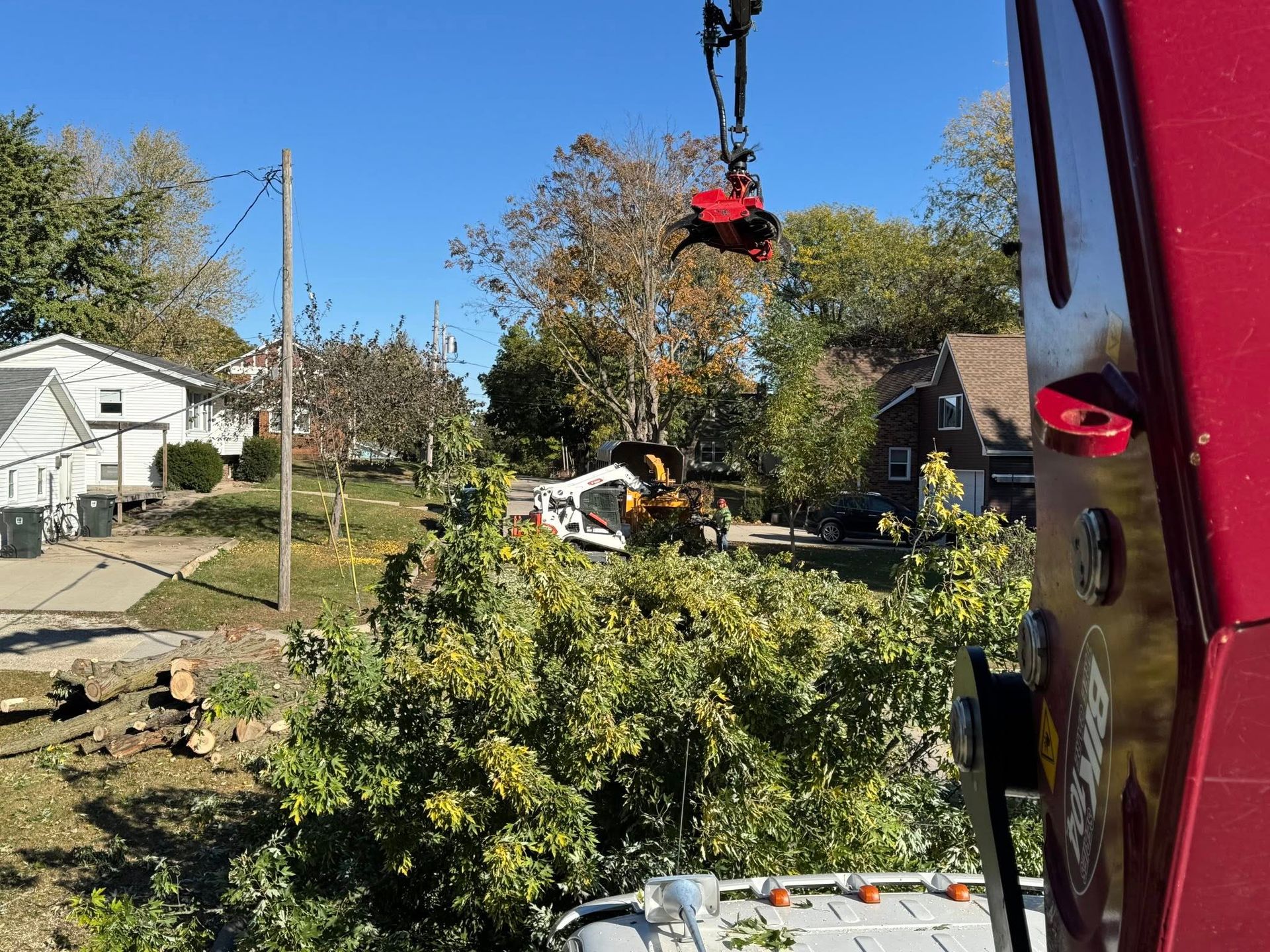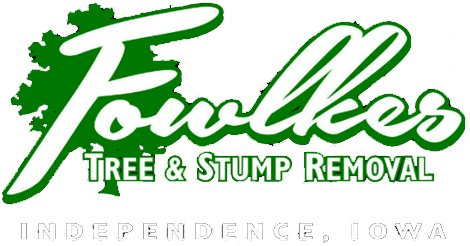What to Do When a Tree Falls on Your Property in Cedar Falls, IA

Table of Contents
- Understanding the Dangers of a Fallen Tree
- Immediate Safety Precautions
- Assessing the Damage
- Emergency Tree Removal: When to Call the Professionals
- Fallen Tree Cleanup: DIY vs Professional Help
- Preventive Measures to Protect Your Landscape
- Conclusion and Call to Action
Key Takeaways
- When a tree falls on property, it can cause serious safety hazards and property damage.
- Prioritizing safety and avoiding impulsive cleanup is critical.
- Professional emergency tree removal can save your property, your landscaping, and even your sanity.
- Proper fallen tree cleanup restores your yard and prevents lingering hazards.
- Regular tree inspections and maintenance reduce the risk of unexpected falls.
Understanding the Dangers of a Fallen Tree
There’s nothing quite like the shock of stepping outside after a storm and discovering that a large branch—or worse, a whole tree—has crashed across your yard. For homeowners like us in Cedar Falls, IA, a tree falls on property is more than a cosmetic issue; it’s a real threat to safety, structures, and the aesthetic harmony of our outdoor spaces.
We’ve seen it happen many times: a beloved oak, previously thriving, leaning precariously due to root rot, finally succumbs after a gust of wind. Suddenly, your deck is partially crushed, or your carefully landscaped flower bed is buried under splintered wood. It’s stressful, overwhelming, and, frankly, a situation most of us are not equipped to handle alone.
A fallen tree can:
- Damage homes, fences, decks, or vehicles.
- Create hidden hazards like exposed nails, sharp splinters, or unstable limbs.
- Affect neighboring trees, shrubs, and overall landscape harmony.
Even small branches falling in the wrong spot can disrupt your yard, but large trees present risks that extend beyond aesthetics. At this point, professional guidance isn’t just convenient—it’s essential. Learn more about
tree removal services to handle situations like this safely.
Immediate Safety Precautions
Our first priority when a tree falls on property is safety. It might be tempting to grab a chainsaw or axe and start clearing the debris, but trees are unpredictable. One misstep can turn a cleanup into a serious injury.
Here’s what we recommend:
- Keep everyone at a safe distance
The area around a fallen tree is unstable. Limbs can shift, and trunks can roll unexpectedly. For the safety of your family, pets, and neighbors, maintain a safe perimeter until the tree is secured. - Watch for electrical hazards
If your tree has landed on or near power lines, do not approach it. We always advise calling the local utility company immediately. Electricity plus wood is a dangerous combination, and even small contact can be deadly. - Survey the surroundings
Take a few minutes to identify what’s been damaged and what could still fall. Sometimes, branches that appear stable are only temporarily held in place, especially if the tree broke under stress. - Protect your home and valuables
If it’s safe to do so, cover broken windows or exposed items with tarps or plastic sheeting. This isn’t a permanent fix, but it can prevent rain or additional damage until help arrives. - Document the scene
Before any cleanup, take clear photos for insurance purposes. Your documentation can make the claims process smoother and ensure your loss is properly assessed.
Even for homeowners who enjoy DIY projects, attempting to tackle a large fallen tree without professional equipment is risky. Calling a trusted service for
emergency tree removal is almost always the safer, faster, and more cost-effective solution.
Assessing the Damage
Once we’ve secured the scene, the next step is a careful assessment. This isn’t just a visual inspection—it’s a strategic evaluation of risk, property, and cost.
Ask yourself:
- Is the tree partially blocking my home or driveway?
- Are branches leaning against structures that could collapse?
- Are there valuable plants or landscaping features buried or damaged?
- Is there a chance the tree could shift further during cleanup?
We’ve worked with homeowners who, at first glance, thought a branch was minor. During assessment, it became clear that attempting DIY removal could have caused more damage to roofs or patios.
Assessing damage also helps determine whether you need emergency tree removal or if a scheduled service will suffice. For instance, a small limb over the lawn might be manageable with proper tools and safety precautions. However, a large tree leaning on a deck or near power lines requires immediate professional intervention.
Emergency Tree Removal: When to Call the Professionals
At Fowlkes Tree And Stump Removal, we often tell clients, “Some trees just aren’t meant to be handled alone.” If you’re facing a significant hazard, emergency tree removal is the safest route.
Situations that warrant a call for professional help include:
- Trees that have landed on structures or vehicles
- Leaning trees that may fall further
- Trees in contact with power lines
- Large branches creating unstable conditions
We’ve had clients in Cedar Falls where a tree fell onto a deck during a storm. By the time we arrived, the tree was resting precariously on the deck frame. Our team carefully assessed weight distribution, stabilized the trunk, and safely removed it without further damaging the property. Attempting that as a DIY project would have been dangerous and costly.
Professional crews bring:
- Specialized equipment such as cranes, chainsaws, and rigging gear
- Experience in handling different types of trees and terrain
- Knowledge to prevent collateral damage to lawns, gardens, or structures
When a tree is threatening your home, hesitation isn’t just inconvenient—it’s unsafe.
Emergency tree removal services are designed to respond quickly, minimize risk, and restore your yard’s safety and aesthetic harmony.
Fallen Tree Cleanup: DIY vs Professional Help
After the initial removal, attention turns to fallen tree cleanup. This step is crucial, especially for homeowners like Leo, who value a well-maintained landscape.
DIY cleanup can work for small branches or trees that have fallen in open areas. Tools like chainsaws, axes, and log splitters can help reduce debris for mulch or firewood. But we always caution: large trees are unpredictable, and even seasoned homeowners risk injury or further damage.
Professional cleanup offers several advantages:
- Complete removal of the trunk and branches, ensuring no lingering hazards
- Stump grinding to restore lawn continuity and usability
- Cleanup of debris in a way that protects existing landscaping
- Optional hauling away of debris, which can be physically exhausting and time-consuming
We’ve learned over years of service that the cleanup process isn’t just about removing wood—it’s about restoring your yard’s appearance and safety. For Leo, that means removing stumps that interfere with planting beds, cleaning debris so patios and decks are usable, and shaping remaining trees, so the yard looks orderly.
Preventive Measures to Protect Your Landscape
A fallen tree is often the result of underlying issues that could have been mitigated with regular maintenance.
To reduce the likelihood of future incidents, we recommend:
- Regular tree inspections
Check for disease, root instability, and structural weaknesses. This allows early detection before branches break or the entire tree falls. - Pruning and canopy management
Proper pruning reduces weight on limbs, encourages healthy growth, and allows more light into your garden. It also improves the overall aesthetics, which is important for homeowners who have invested in patios, decks, and landscaping. Learn more about tree pruning and removal. - Stump management
Leftover stumps can become tripping hazards and disrupt the flow of your yard. Removing stumps after tree removal helps maintain continuity in lawn and garden areas. - Plant strategically
When planting new trees, consider root space, height potential, and proximity to structures. Proper placement prevents future headaches and contributes to a balanced landscape. - Professional seasonal checks
Storms, heavy snow, and high winds can stress trees. Seasonal inspections by trained professionals catch problems before they escalate.
By investing in preventive care, homeowners in Cedar Falls can enjoy a beautiful, safe yard without the sudden shock of a fallen tree disrupting their outdoor living space.
Conclusion
A fallen tree can be alarming, stressful, and potentially dangerous. But with the right precautions, assessment, and professional support, your property can be restored efficiently and safely. From emergency tree removal to complete fallen tree cleanup, having experienced experts by your side makes all the difference.
At Fowlkes Tree And Stump Removal, we understand how much your yard means to you. We know that a well-maintained tree isn’t just about safety—it’s about enhancing the beauty and harmony of your outdoor space. Our team offers thorough inspections, careful pruning, and expert removal services that respect both your property and your landscaping vision.
If you’re dealing with a tree that has fallen on property, don’t wait—contact us today. Let us help you restore safety and beauty to your yard with professional care and attention. Visit our homepage, call us at (319) 327-1199, or email us at fowlkestreeandstumpremoval@gmail.com. Your yard deserves nothing less than expert care, and we’re here to provide it.
Frequently Asked Questions
What should we do immediately if a tree falls on our property?
We always prioritize safety first. We keep everyone at a safe distance, avoid touching power lines, and assess the scene. Calling professionals for emergency tree removal ensures the situation is handled safely and efficiently.
How do we know when to call for emergency tree removal?
We call for help when a tree threatens our home, vehicles, or power lines. Large trees or unstable branches can be dangerous, and professional crews can remove them safely without causing further damage.
Can we handle fallen tree cleanup ourselves?
For small branches, yes—but for large trees, we rely on professionals. Fallen tree cleanup requires equipment and experience to avoid injury and protect our property. Professionals ensure a complete, safe cleanup.
How can we prevent future trees from falling on our property?
We schedule regular inspections, pruning, and stump management. Healthy, well-maintained trees are less likely to fall, keeping our yard safe and beautiful while reducing the need for emergency services.
Who should we contact if a tree falls on our property?
We contact experts like Fowlkes Tree And Stump Removal. Their team handles tree falls on property, emergency tree removal, and fallen tree cleanup with care, restoring safety and beauty to our yard.
